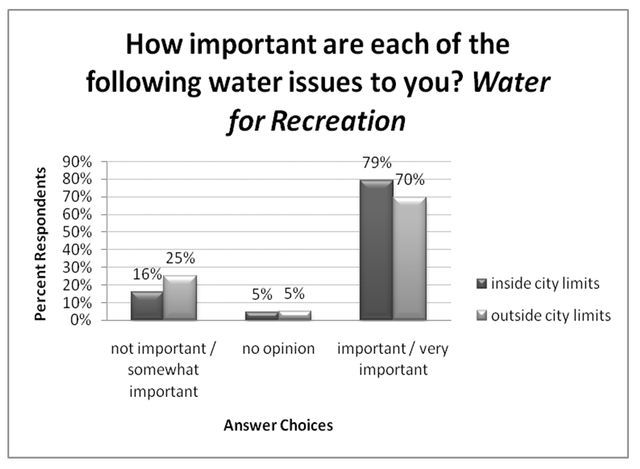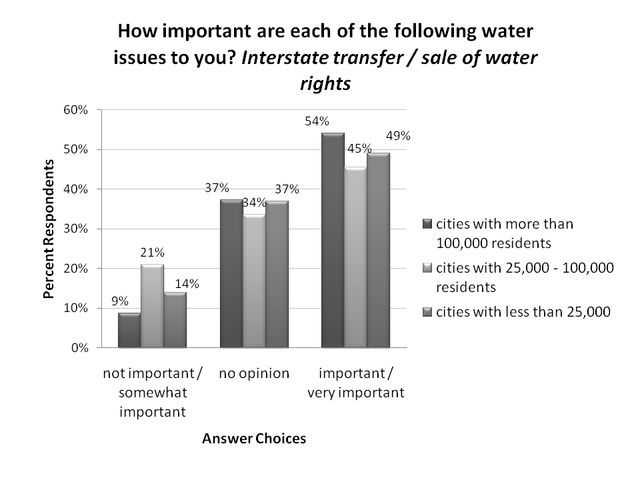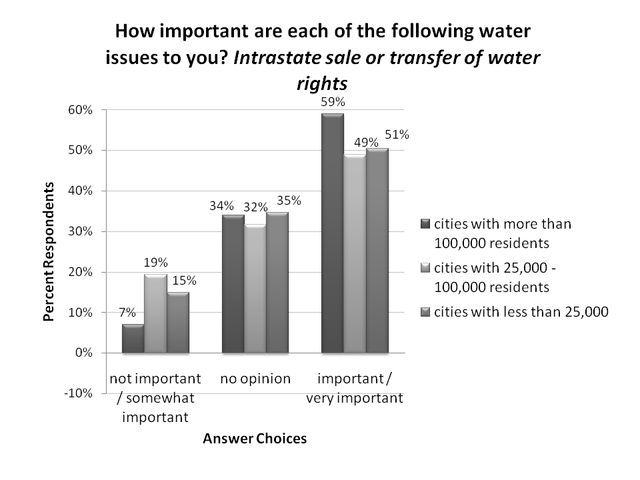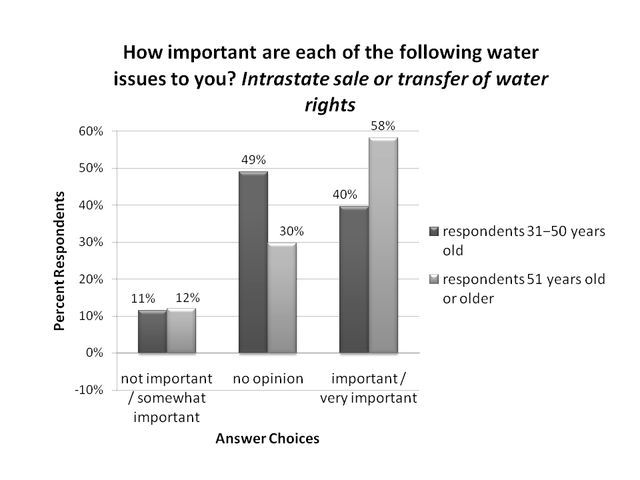Acknowledgments
This project was funded by the United States Department of Agriculture (USDA), National Institute of Food and Agriculture, under agreement 2008-51130-19537, also known as the Southern Region Water Resource Project. The publication summarizes Florida results of a national project conducted by Robert Mahler, Professor of Soil and Environmental Sciences at the University of Idaho. The project was supported in part by the Southern Region Water Policy and Economics program team led by Michael D. Smolen, Oklahoma State University, Leeann DeMouche, New Mexico State University, and Donn Rodekohr, Auburn University. Damian Adams, University of Florida, and Alyssa Dodd, Department of Environmental Resources Management (Palm Beach County, Florida), were instrumental in the development of this survey. The authors also would like to acknowledge editorial suggestions for this publication by Sherry Larkin, Carol Fountain, and Travis Prescott, University of Florida.
Introduction
This publication summarizes responses to a public survey about the importance of water-resource issues in Florida titled Water Issues in Florida. The survey was mailed to 1,154 randomly selected Florida households in the fall of 2008 and spring of 2009; 523 households completed and returned the survey (45.5% response rate). The majority of survey respondents had at least a high school diploma (97%), were male (68%), and were at least sixty years old (60%). Most survey respondents resided in a city with a population of at least 25,000 residents (76%), had resided in Florida for at least five years (90%), and resided in Florida year-round (89%). In comparison with total Florida population, the survey respondents were much older, were more educated, and were comprised of a larger proportion of males (Table 1).
In this publication, the correlation between survey responses and respondents' age, education, gender, and residency status is examined using the chi-square test. The chi-square test is a statistical test commonly used to examine if frequencies observed in data differ from frequencies predicted based on a certain hypothesis (for more information about the chi-square test and other methods commonly used for data analysis, see EDIS publication PD001, Phases of Data Analysis, by Glenn Israel [2009], https://edis.ifas.ufl.edu/publication/pd001). The hypothesis tested in this study is that survey answers are independent from respondents' demographic and residence characteristics (referred to as null hypothesis). Depending on chi-square test values, we reject this hypothesis (or fail to reject it). However, none of the statistical tests allow researchers to make definite conclusions. In this study, we use the 95 percent or 99 percent confidence level when we reject the null hypothesis (i.e., there is still a 5% or 1% chance that we reject the null hypothesis when it is actually correct).
Florida Water—Resource Issues
Water-resource quality. The respondents were asked to rank the importance of water-resource issues by selecting one of the following answers: not important / somewhat important, no opinion, important / very important. The first seven questions asked about respondents' feelings about clean (1) rivers and lakes, (2) marine water, (3) bays and estuaries, (4) beaches, (5) drinking water, (6) groundwater, and (7) water for shell-fishing. More than 90 percent of respondents ranked each of these issues as important / very important (Table 2). The respondents felt most strongly about the importance of clean drinking water, with 100 percent of respondents ranking this issue as important / very important. For comparison, clean water for shell-fishing was perceived as important / very important by about 90 percent of respondents.
Importance of water for various uses. Next, the respondents were asked about the importance of water in various uses. Water for aquatic habitat and water for agriculture were ranked as important / very important by almost 90 percent of respondents (Table 3). For comparison, water for household landscaping was ranked as important / very important by about one-half of respondents, while more than one-third of respondents felt this use is not important / somewhat important. For the issues of water for power, commerce, and industry, 10 percent of respondents had no opinion, which indicates limited information on the subject (can be an educational opportunity).
Water for recreation was ranked as important / very important by 76 percent of respondents. Interestingly, more respondents residing inside city limits ranked this issue as important / very important in comparison with respondents residing outside city limits (79% versus 70%) (Figure 1). Furthermore, 25 percent of respondents residing outside city limits ranked this issue as not important / somewhat important, in comparison with only 16 percent of respondents residing inside city limits. The chi-square test indicated that this difference in responses was statistically significant with 95 percent confidence level. More research should be conducted to explain such difference in the responses.

Sale / transfer of water rights. Two survey questions focused on the issues of interstate and intrastate (within-state) water sales or transfers of water rights. These issues generated controversy in recent years (see Goodnough [2003] for a discussion about water transfers from north to south Florida, and FDEP [2009] for information about water allocation in the interstate region of the Apalachicola-Chattahoochee-Flint [ACF] River basin). Intrastate transfer / sale of water rights was ranked as important / very important by 54 percent of respondents, and interstate transfer / sale of water rights was ranked the same by 52 percent of respondents (Table 4). About one-third of respondents had no opinion on at least one of the issues.
For both questions, more respondents residing in cities with populations greater than 100,000 people selected the important / very important option (Figures 2 and 3). For example, 54 percent of respondents residing in cities with populations greater than 100,000 people ranked interstate the issue of sale / transfer of water rights as important / very important, in comparison with 45 percent of respondents residing in smaller cities with populations between 25,000 and 100,000 people (chi-square test showed that this difference in responses is statistically significant with 95% confidence level). Similarly, for intrastate water sale and transfer, 59 percent of respondents residing in cities with populations greater than 100,000 believed that the issue is important / very important, in comparison with 49 percent of respondents residing in smaller cities with populations between 25,000 and 100,000 people (chi-square test results showed that this difference in responses is statistically significant with 95% confidence level).


Furthermore, respondents older than age 50 tended to rank the issues of interstate or intrastate water rights sale / transfers as important / very important, while respondents between the ages of 30 and 50 selected the no opinion option more often (Figures 4 and 5). Chi-square tests showed that the difference in responses is statistically significant with 99 percent confidence level.


Hypoxia. Hypoxia is when the concentration of dissolved oxygen in lakes, estuaries, or other water bodies decreases "to a level that can no longer support living aquatic organisms" (LUMCON 2010). Survey respondents were asked about hypoxia—the hypoxic zone in the northern Gulf of Mexico is the largest zone currently affecting the United States (LUMCON 2010), and it is commonly referred to as the Gulf Dead Zone—and 52 percent of survey respondents ranked this issue as important / very important, whereas 40 percent had no opinion on the matter, and 8 percent felt that the issue is not important. The high percentage of respondents with no opinion on this issue can be explained by the limited information available to Florida residents about the hypoxic conditions in the Gulf of Mexico.
The chi-square test showed that responses to the survey question about hypoxia were correlated with the number of years respondents have resided in Florida (with 95% confidence level). Interestingly, the greatest number of important / very important responses (60%) was received from respondents who have resided in Florida for a period of 5–9 years; only 27 percent of such respondents had no opinion on this issue. Among the respondents who have resided in Florida more than 10 years but not all their lives, 46 percent had no opinion, and only 49 percent believed that this issue is important / very important.
Conclusions
Clean rivers, lakes, bays, estuaries, marine waters, as well as clean beaches and groundwater, and clean water for shell-fishing were all ranked as important / very important by at least 90 percent of respondents. For water allocation among alternative users, about one-third of respondents believed that water for household landscaping is not important / somewhat important, while water for aquatic habitat was perceived as important by about 90 percent of respondents. About one-third of respondents had no opinion about interstate and intrastate water sales and transfers of water rights, and reported the same position with regard to hypoxia / dead zone in the Gulf of Mexico. These results indicate a lack of information available to the respondents on these issues.
Survey responses depended on residence and demographic characteristics of citizens. Location inside city limits influenced the opinions about the importance of water for recreation. Furthermore, respondents residing in cities with populations greater than 100,000 people ranked the importance of interstate or intrastate water rights sales and transfer higher than those residing in smaller cities. More respondents who have resided in Florida all their lives believed that the issue of hypoxia (Gulf dead zone) is not important (in comparison with respondents who resided in Florida for a shorter time period).
With respect to demographic characteristics, respondents from different age groups had different attitudes about interstate or intrastate water rights sales or transfers. About one-half of respondents between the ages of 31and 50 had no opinion on these issues, while older respondents tended to believe that these issues are important / very important.
Education and outreach programs should account for the differences in opinions and attitudes of Florida citizens. Educational programs should be designed with diversity in mind by targeting different age groups, people residing inside or outside city limits, citizens in cities of different sizes, newer residents of Florida versus long-time residents, and the state's part-time residents versus its year-round residents.
References
FDEP. 2009. Apalachicola-Chattahoochee-Flint River System. Florida Department of Environmental Protection, Tallahassee, FL. http://www.dep.state.fl.us/mainpage/acf/default.htm
Goodnough, A. 2003. Developers urge support of water transfer to populous South Florida. The New York Times, September 27. https://www.nytimes.com/2003/09/27/us/developers-urge-support-of-water-transfer-to-populous-south-florida.html?pagewanted=1
Israel, G. 2009. Phases of data analysis. Electronic Data Information Source (EDIS) PD001. Gainesville, FL: UF/IFAS. https://edis.ifas.ufl.edu/publication/pd001
LUMCON. 2010. Hypoxia in the Northern Gulf of Mexico. Louisiana Universities Marine Consortium, Chauvin, LA. https://gulfhypoxia.net/about-hypoxia/
SAS. 2010. SAS: The Power to Know. Cary, NC: SAS Institute, Inc. https://www.sas.com/en_us/home.html
US Census Bureau. 2008. 2006-2008 American Community Survey 3-Year Estimates. S1501. Educational Attainment. Florida. United States Census Bureau, Washington, D.C. http://factfinder.census.gov/servlet/STTable?_bm=y&-qr_name=ACS_2008_3YR_G00_S1501&-geo_id=04000US12&-context=st&-ds_name=ACS_2008_3YR_G00_&-tree_id=3308&-_lang=en&-format=&-CONTEXT=st
U.S. Census Bureau. 2000. Profile of General Demographic Characteristics: 2000. Florida. United States Census Bureau, Washington, D.C. https://www.census.gov/library/publications/2001/dec/2kh.html